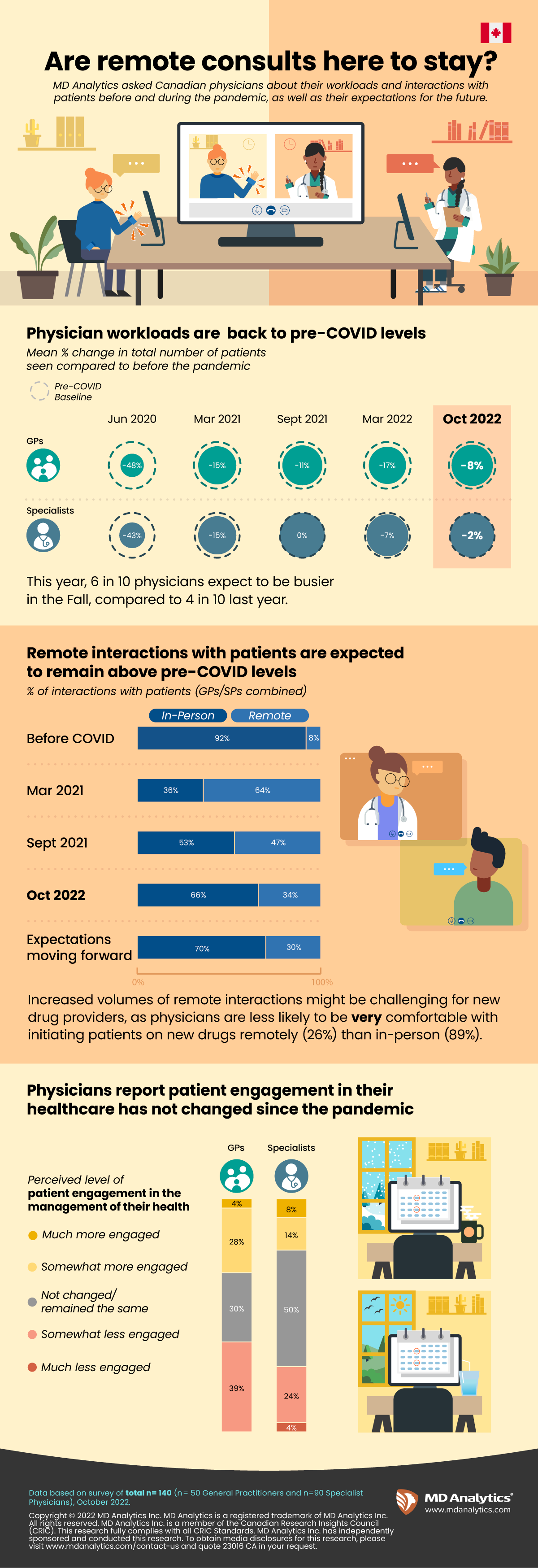With COVID-19 about to enter its 3rd year, it continues to significantly impact the lives of Canadians and the practices of HCPs in the country. Even though it has not been easy, physicians have continuously adapted how they manage their patients and how they interact with key healthcare stakeholders during the pandemic. MD Analytics has been monitoring these trends over the past few years and we have recently interviewed 50 family medicine physicians and 90 specialists in our latest survey on the topic.
Read More
The results show that while physician workloads are almost back to pre-COVID levels, the way physicians interact with patients has not. Although not as significant as in the early days of the pandemic, a larger proportion of patient consultations now take place remotely, compared to before the pandemic. Physicians don’t expect this to change much in the coming months and, even if it was entirely up to them, they would like to continue having a significant portion of their interactions with patients in remote settings.
This new normal will certainly have implications on prescribing habits, as physicians have indicated not being quite as comfortable with initiating patients on new treatments during remote consultations.
The data also suggests that, on average, physicians have not observed a noticeable shift in patient engagement with the management of their health since the beginning of the pandemic. Some physicians have noticed an increase in patients requesting specific medications, but not overwhelmingly so.
Key takeaways
- Are physician workloads back to pre-COVID-19 levels?
- How has the format of physician-patient interactions changed since COVID-19?
- How would physicians prefer to interact with patients moving forward?
- Have physicians noticed a shift in patient engagement lately?

